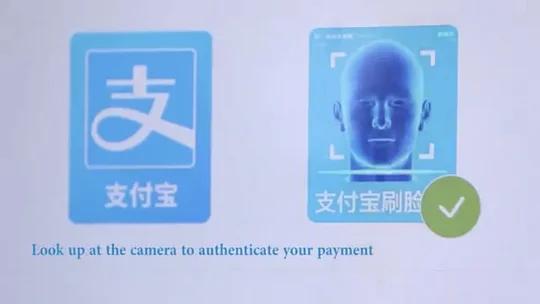The State Of Retail Payments In Asia-Pacific
Social network giants are using existing technologies to offer new payment methods in Asia-Pacific
This part of the changing global payments landscape series focuses on how providers in the Asia-pacific region are utilising existing technology to offer consumers newer ways to pay. Meanwhile, changes in regulation and consumer expectations are playing a key role in enabling newer market entrants to offer various payment propositions.
Despite cash remaining prevalent in certain parts of the region, in other areas it is leading innovative trends including payments via mobile e-wallets, contactless and biometric technology. This reflects the size and diversity of populations within the region.
Regulation is a key driver of innovation in APAC with many countries implementing rules based around the opening up of access to customer data. Such rules already exist in China, Singapore, Malaysia and Australia. Elsewhere, Japan is focusing on getting banks to release payment account APIs to boost efficiency in payments, and is being driven by Japan’s Banking Act which was amended in 2017 to promote innovation using open APIs. Demonetisation in India, meanwhile, has propelled innovation in payments in order to provide alternative methods of payment to millions of people who suddenly had reduced access to cash.
Technological advancement is also playing its part. Across many Asian markets, it has facilitated the rise of massive commerce platforms such as WeChat, AliPay and PayTM. These companies successfully integrated an existing financial infrastructure of bank accounts and cards with messaging platforms used by billions of consumers thanks to the high rates of smartphone adoption. For context, AliPay boasts 1.2 billion users globally and was the world’s most used app in 2018. By integrating other systems and services into their platforms using a combination of APIs and purpose built connections, these apps have evolved from just messaging platforms to “lifestyle apps”. They are responsible for introducing payment mechanisms such as those powered by QR codes and biometrics to a huge audience, in many countries across the whole region.
Seamless transactions and contextual payments are two innovations pushed by mega apps. For instance, a popular parking lot service provider links directly to your digital wallet, so as your car leaves a parking lot, it reads your plate number and knows to deduct from your wallet the corresponding fee.
Tyler Aveni, Head of International Fintech Partnerships at WeBank
Meanwhile, consumer attitudes in the region generally reflect those held globally (digital, instant, seamless), but as you might expect, there are regional differences.
Consumer habits are at least partially being shaped in reaction to the types of solution offerings being offered in-market; consumer payments businesses are still using subsidization, in the form discounts or financial incentives, are used to build-up user behaviour and habit.
Tyler Aveni, Head of International Fintech Partnerships at WeBank
Contactless payments via Quick Response codes (QR)
The use of QR codes has become widespread in APAC, particularly in China (AliPay, WeChat Pay), Hong Kong (PayMe), India (PayTM), Indonesia (Go-Pay) and Singapore (GrabPay). Use is also growing in New Zealand (Smart Pay) and in Australia, where a push from the New Payments Platform (NPP), which is working on linking QR code payments to its real-time infrastructure will likely drive adoption. The latter initiative is largely to accommodate tourists from other parts of the region but is also being slowly adopted by locals, for example, street performers in Melbourne trialling the method.
QR codes are not new technology, and are used for other purposes such as adding friends on social media; however, the growing prevalence of smartphones and the fact that no internet connectivity is required to pay has seen them being increasingly integrated into new payment mechanisms. The information on QR codes is encrypted, adding a layer of security and making consumers feel more at ease about this payment method.
In addition to the payments being processed instantly in most cases, the rise in popularity of QR payments is also partly down to the fact that they are an excellent way for merchants to accept payments without a card machine or other expensive equipment, while the customer doesn’t have to own a payment card. That makes them particularly well suited to countries with less well developed connectivity and formal financial infrastructures — a description that applies to many parts of Asia. The introduction of supportive regulation such as standardisation of QR codes is also allowing this payment method to flourish.
AliPay
AliPay was one of the first to build its payment app on QR code technology and in doing so, it has been instrumental in QR code adoption as a payment mechanism across the region. Seeing the growing usage of mobiles, AliPay has driven wallet use and created a strong customer-value proposition by using payments as a gateway to a larger digital ecosystem of products and services. Furthermore, by tapping into the consumer expectations of reward schemes in Hong Kong, AliPay managed to enter into partnerships with retailers which have incentivised more consumers to use it at point-of-sale and extend its reach. To ensure its customers can still use their preferred method when across borders, AliPay is also partnering with other providers in various countries and regions to form unified QR codes which will promote interoperability of payment services by ensuring their customers can still use their preferred method when overseas.

AliPay's mobile payments app
Biometric Payments
As innovation in payments ramps up, focus is increasingly being placed on ensuring payments remain secure. Biometric technology was first used as a way to authenticate payments but increasingly it is powering the payment mechanisms themselves using fingerprint, iris, palm vein or facial recognition technology. The fact that biometric information can be integrated into existing banking, government IDs and retail programmes and can be applied to new digital ID programmes, which can help with financial inclusion initiatives, makes it particularly attractive to the APAC region. It also doesn’t necessarily require a mobile phone.
How do biometric recognition payments work?
Typically, the consumer’s biometrics are linked to their bank account or a payment system such as a digital wallet, while POS terminals are equipped with readers that link to these systems. Following the scan of a finger, palm, vein, iris or face, payment is debited from a customer’s account. The process is also not only secure, but enables those that have disabilities or can’t read and write to access financial infrastructure.
Though not as widespread as QR codes, biometric payments are picking up momentum. So far, the most common type of biometric payment uses fingerprint recognition — it’s already widely used in China (AliPay’s fingerprint to pay-service had 870 million registered users as of August 2019), Singapore and India. Meanwhile, South Korea is developing palm vein payments — an option also being explored by Amazon for its stores in the US.
Facial recognition payments
Though being trialled in other regions, Asia is leading the way when it comes to facial recognition schemes, such as AliPay’s smile to pay, AliPay Dragonfly or WeChat Pay’s Frog Pro. This payment method requires no physical interaction from the consumer — a bonus in instances when hands are not free, such as when carrying luggage or children. It’s already being used in retail stores, including over 1,000 7-Eleven stores, with a similar strategy being adopted in Thailand as well. Chinese transit systems and subway stations are also using facial recognition payments, which Japan is also trialling.

Facial recognition payments checkout screen (source: Alibaba)
Though promising, biometrics can be a hard sell in countries such as Hong Kong, where there is a culture of raised concern over security and privacy. However, WeBank’s Tyler Jackson had this to comment on the matter:
I believe the benefits to consumers in security and convenience greatly outweigh potential downsides often mentioned, since data privacy and data security are issues that a combination of effective regulation and ethical technological development can address in the long-run
Tyler Aveni, Head of International Fintech Partnerships at WeBank